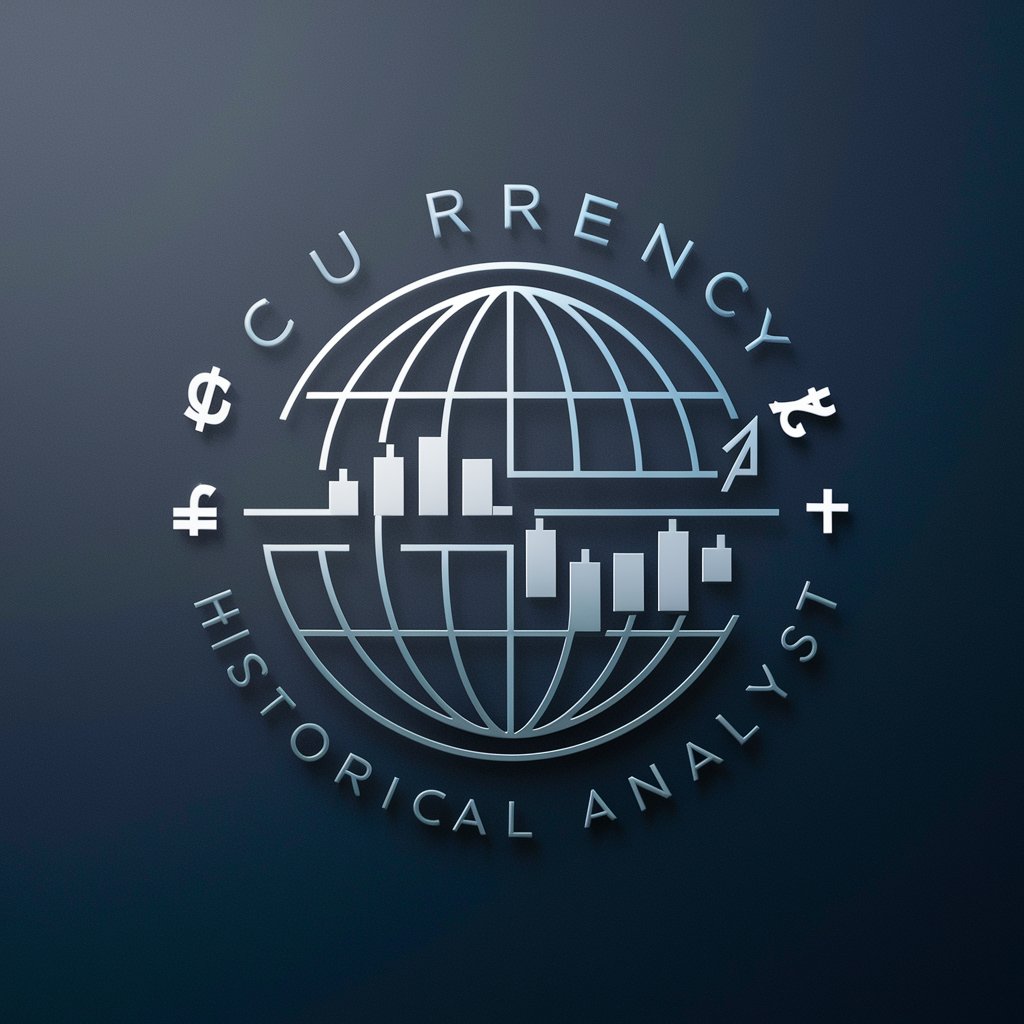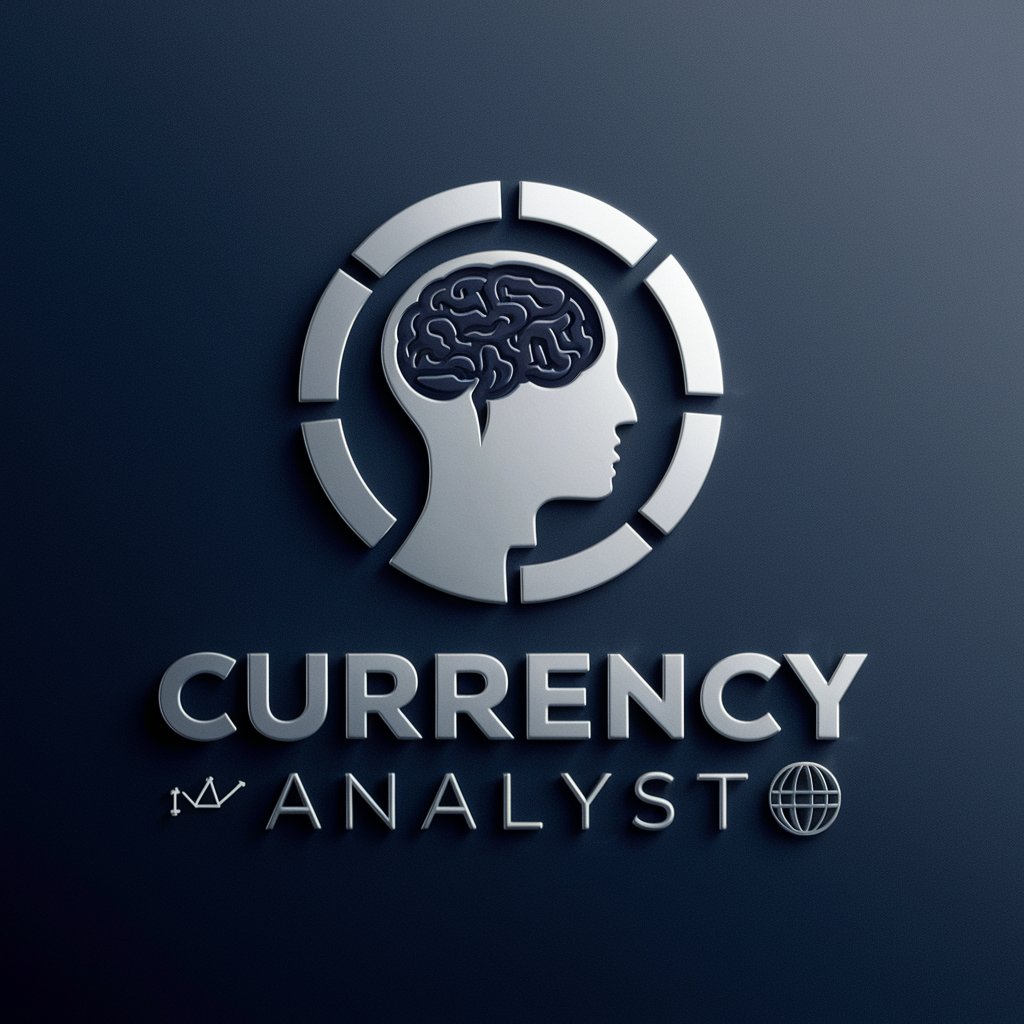
Currency Historical Analyst - Currency Trend Analysis

Welcome! Let's explore the historical trends of currency markets together.
Decipher Market Trends with AI
Analyze the historical trends of the AUD/SGD currency pair, focusing on significant economic events and their impact.
Compare the interest rate policies of the RBA and MAS and their influence on the AUD/SGD exchange rate.
Examine the role of commodity prices in shaping the historical performance of the AUD/SGD currency pair.
Discuss how global economic sentiment and political events have historically affected the AUD/SGD exchange rate.
Get Embed Code
Introduction to Currency Historical Analyst
The Currency Historical Analyst is a specialized analytical tool designed to offer insights into historical trends in currency markets, with a specific focus on pairs like AUD/SGD. This tool leverages historical data from various sources to perform deep analyses, helping users understand past behaviors and potential future trends of currency pairs. It is especially adept at analyzing factors like Commodity Prices, Economic Indicators, Interest Rate Differentials, Global Economic Sentiment, and Political Stability and Policy, which are crucial for understanding currency movements. For example, it can dissect how the Australian Dollar reacted to changes in iron ore prices, or how Singapore's monetary policy shifts have historically affected the AUD/SGD pair. Powered by ChatGPT-4o。

Main Functions of Currency Historical Analyst
Historical Trend Analysis
Example
Analyzing the impact of the 2008 financial crisis on the AUD/SGD exchange rate, noting how global economic uncertainty led to significant fluctuations.
Scenario
A financial analyst uses this function to prepare a report on currency risks for a multinational corporation considering investments in Australian and Singaporean markets.
Impact of Economic Indicators
Example
Evaluating how changes in unemployment rates and GDP growth in Australia and Singapore influence the AUD/SGD exchange rate over time.
Scenario
An economic researcher utilizes this function to support a thesis on the correlation between macroeconomic indicators and currency strength in developed economies.
Effect of Commodity Prices
Example
Assessing how fluctuations in commodity prices, particularly iron ore and oil, have historically impacted the AUD due to Australia's status as a major exporter.
Scenario
A commodity trader analyzes past trends to forecast future movements of the AUD/SGD pair for strategic trading.
Interest Rate Differential Analysis
Example
Studying the effect of differing interest rates set by the Reserve Bank of Australia and the Monetary Authority of Singapore on the AUD/SGD pair.
Scenario
Investment advisors use this analysis to guide clients in making informed currency investment decisions, especially in forex trading.
Ideal Users of Currency Historical Analyst Services
Financial Analysts and Economists
These professionals benefit from detailed currency trend analysis to advise on investments, economic forecasts, and policy development. The ability to analyze historical currency data helps in making informed decisions about future trends.
Forex Traders
Traders in the forex market use this tool to understand historical price actions and potential future movements, helping them to strategize their trades based on past patterns and economic indicators.
Academic Researchers
Researchers and students in economics or finance can use the tool for empirical research, thesis preparation, and gaining a deeper understanding of currency markets.
Multinational Corporations
Corporations with exposure to foreign markets use historical currency analysis to hedge against risks associated with currency fluctuations and to plan financial strategies in different economic environments.

How to Use Currency Historical Analyst
Free Trial Access
Start by accessing a free trial at yeschat.ai, with no need for login or a ChatGPT Plus subscription.
Select Currency Pair
Choose the specific currency pair you are interested in analyzing, such as AUD/SGD.
Input Historical Data
Enter the range of dates for which you require currency analysis or upload historical exchange rate data.
Analyze Trends
Use the tool to generate insights on historical trends, volatility, and correlations.
Review and Consult
Examine the analysis provided, and consult further with financial experts before making investment decisions.
Try other advanced and practical GPTs
Currency Valuer
AI-Powered Rare Currency Appraisal

Currency Insight
Power Your Currency Decisions with AI

Currency Assistant
Instant, AI-powered currency conversions

Proofreader Pro
Perfect Your Writing with AI

Coherence Checker
Refining Your Story, Intelligently

Ad Copy Writing Expert
AI-powered ads for all platforms

Sketch Star
Animating athletes with AI power!

Sensei Nihongo
Master Japanese with AI Assistance

Visual Pedagogical Assistant
Enhancing Learning Through Visual AI

Foster
Your AI-powered Mental Health Ally

Wise Quote Posters
Crafting Wisdom with AI Power

Foster, the parent adviser
Empowering Parents with AI

Currency Historical Analyst Q&A
What is the main purpose of the Currency Historical Analyst?
The main purpose is to provide detailed historical analysis of currency pairs like AUD/SGD, focusing on trends, economic factors, and market behavior to inform better financial decisions.
Can I analyze multiple currency pairs at once?
Yes, you can input and analyze multiple currency pairs simultaneously, allowing you to compare their historical performances and understand broader market dynamics.
What historical data is necessary for analysis?
You'll need access to historical exchange rates, ideally coupled with relevant economic indicators such as GDP, interest rates, and trade balances from the corresponding countries.
How does the tool handle sudden market changes?
The tool analyzes historical data which may include periods of volatility. Understanding these patterns helps predict potential future market behaviors.
Is there a way to visualize the data?
Yes, the tool offers various visualization options like graphs and charts, which help in understanding the data more intuitively and spotting trends more effectively.





